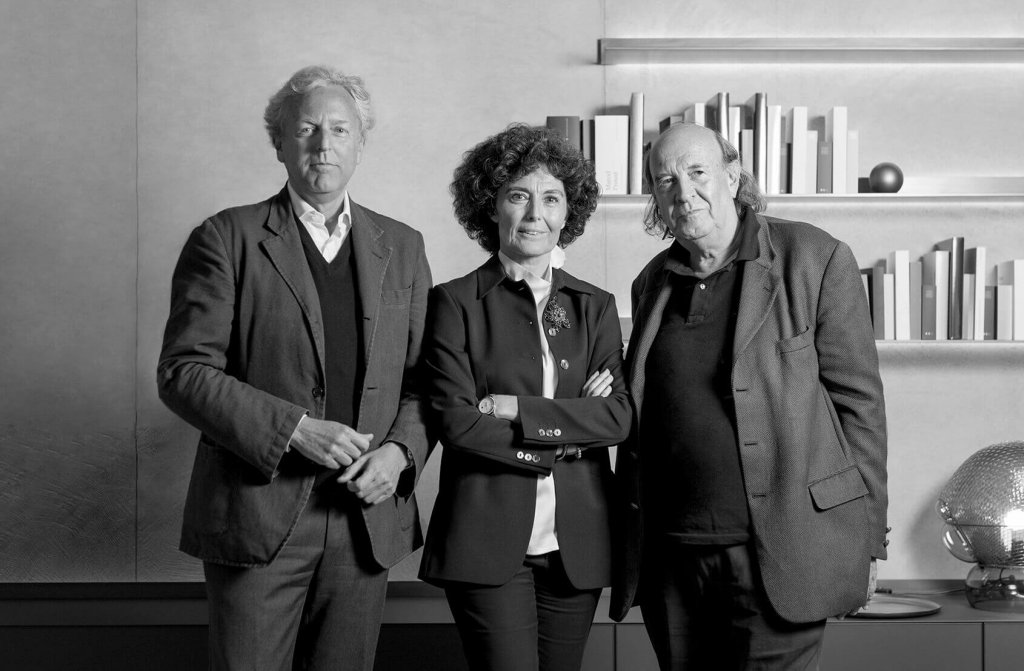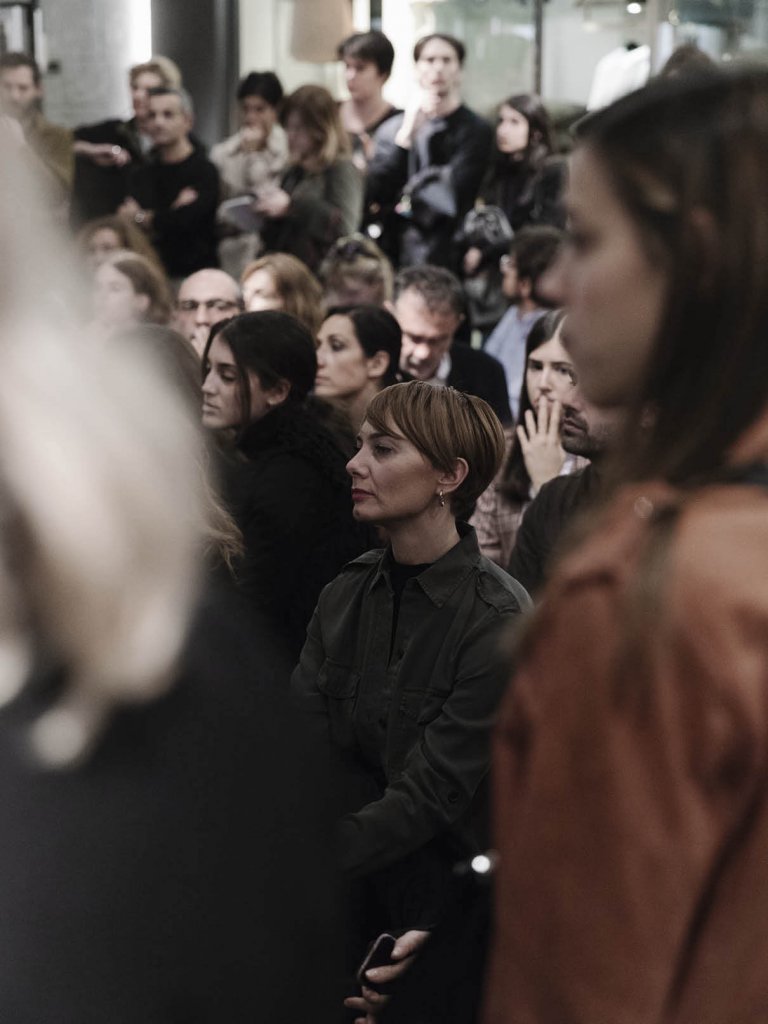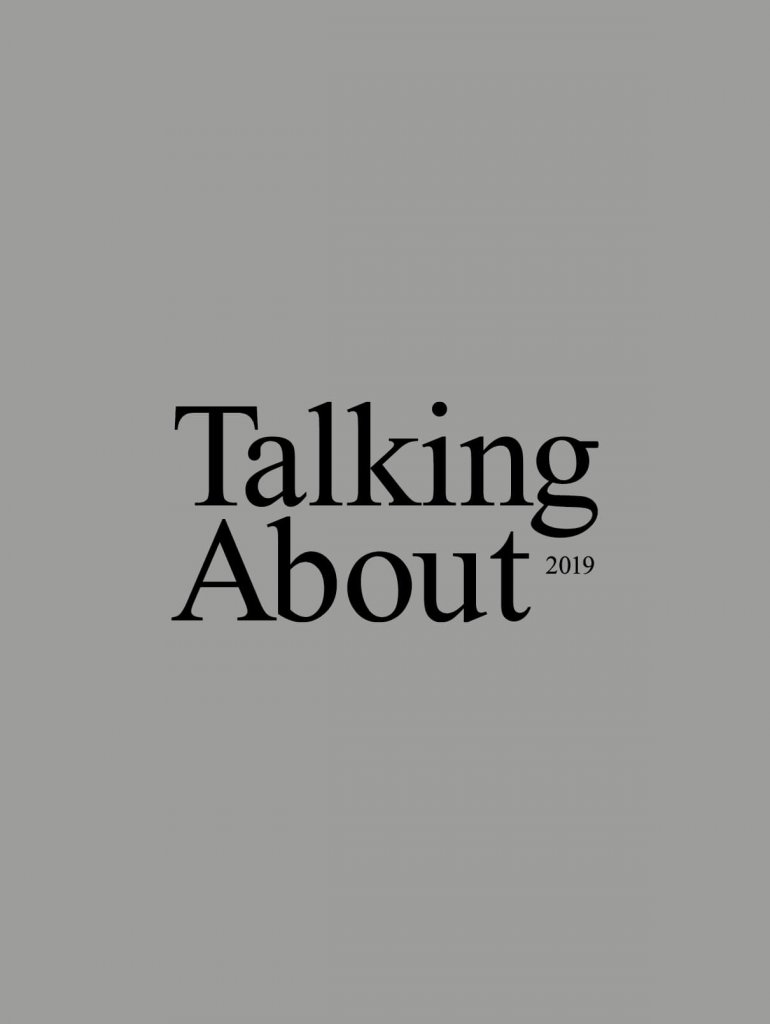Interview: Talking About 2019. Luxury and Storytelling: when print meets digital
Emanuele Farneti, Editor in Chief of Vogue Italia meets Riccardo Pozzoli, Creative Director of Condè Nast Social Talent Agency.
Emanuele Farneti: The aim of this encounter is to discuss what luxury means today in our respective worlds. I contacted Riccardo Pozzoli because I believe speaking about communication from our different points of view, respectively a director with a career in traditional publishing and a native digital entrepreneur, could be interesting. What does luxury mean for you, for your generation?
Riccardo Pozzoli: Massimo Bottura once said to me: “For me luxury is a byword for time”. That is an interesting concept for the recent generations of consumers of material luxury goods. This has evolved and goes beyond “I have the time to do things”: today we talk about quality, living memorable experiences which are worthwhile.
E.F: Does it make sense to talk about luxury at a time when a cultural change is inevitable for the future of our planet? Does it make sense to move a thousand people to the other side of the world for a 12 minute fashion show? We all have to question ourselves, and I say this as the editor of a magazine that is literally the home of luxury in Italy and throughout the world. For generations the idea of persuading people to consume more has been part of our DNA, but does it still make sense today?
R.P: It is an interesting subject to be addressed from a digital point of view and technology must help us. Augmented reality, virtual reality or other technologies are not going to substitute human creativity, but they will help bring something potentially to life.
For example, a fashion show, something that up until a few years ago was considered exclusive now, thanks to technology, it can be experienced. Technology has democratized the approach to luxury. This is also true from an environmental, economic and social responsibility and sustainability point of view.
E.F: The balance between exclusive and inclusive experiences is topical. This evening we will try to work out the balance between the traditional world of print, represented this evening by myself, and the world of new media as represented by Riccardo. You can begin by telling us how you essentially invented a job that previously didn’t exist.
R.P: In October 2009 I was at the final stage of my MA in Marketing at Bocconi University. I was in the USA and I realized that the American market was beginning to take into consideration digital opinion leaders who were emerging at that time. At that time there was no Instagram, or Snapchat: they were users from communities, the same people who left reviews on Amazon or the few who did so on Facebook. I knew Chiara Ferragni well and we started out with “The Blonde Salad” that then developed its business into some wonderful things including: a blog, a magazine, a media company, an e-commerce site.
Over these years I have gained fundamental experience and a vision of the evolution of influencer marketing, always keeping an open mind and not labelling in any way what was happening and what people were doing. Even back in 2010 luxury companies would ask me: “What exactly is a blog? How can we do business together?” At that time I didn’t have the answers- I had a degree in Finance. But I tried to understand their needs, in other words, to bring to life a new experience one which the printed press couldn’t create.
E.F: I started out as a video journalist, using an analog camera in real time to document on what was happening in the city. It was a project based on the New York television model NY1.
Then I met a truly great Director, Andrea Monti, who took me on at GQ. Following a number of different professional experiences in various publishing houses, I was chosen by Condé Nast, who were in the situation of having to find someone to replace an irreplaceable person such as Franca Sozzani, choosing someone with a pure editorial background rather than a fashion one. What I like most about my work is that Vogue Italia is an extraordinary platform thanks to the way it has been set over the years, using different languages and channels harmoniously. I don’t think that there is another media in Italy or perhaps even in the world which allows you to do this work.
R.P: Is Vogue Italia an eco-system?
E.F: If I have to imagine a moment that sums up our activities, then I would say a day last July. I was in Brussels for a project based on Europe on Uomo Vogue. I had been invited to the European Parliament where I took part in a series of encounters aimed at understanding if this project could proceed. At that precise time my office in Milan was being taken apart and fitted out for a Barbie set, as we had “hired” her as a special reporter for fashion week.
This example shows just how varied, sometimes even in the same time frame, the range of activities which center on Vogue Italia can be. Vogue Italia has 3,200,000 followers on Instagram, twice as many followers as all the other sector publications put together and, if compared to Italy’s leading newspaper, six times as many. A reflection of how this media has been developed over the years forging a truly international audience.
R.P: Does the popularity on social media reflect this influence, this heritage?
E.F: The 3,000 participants of the party we organized three years ago under the creative direction of Riccardo Tisci, epitomized just how many differnt types of people are close to the Vogue brand: from friends going back to the days of Franca to the guys from fashion schools; from celebrities to people who have “normal” jobs in companies, all happy and engaged with the brand. Would you like to tell us about the activity you are developing in Condé Nast, that has prestigious brands such as Vogue Italia e Vanity Fair, but does not pass up on trying to tap into new worlds?
R.P: Last year we launched the Condé Nast Talent Agency, the group’s first real step towards the world of influencers. It was not an obvious step. The agency selects and manages a range of personalities from the digital world, who are able to entertain a community on a generally vertical theme.
E.F: How do you go about choosing them?
R.P: We have a qualitative rather than a quantitative approach. Today Condé Nast needs personal points of view on a number of different issues. This does not necessarily lead to millions of followers but it does create a highly targeted community. Together with these talents we would like to tap into integrated communication projects with the group’s other assets.
E.F: How far is the choice of Instagram creditable and principled, or is it all a question of controlling data?
R.P: It is 50% ethics and principles and 50% strategy: in the short term, if everyone posts the same content because it performs well, the entertainment level becomes low. In the long term it may mean that in three years times a new, more interesting Instagram will appear, where people will feel free to post whatever they want, creating a wealth of content that could be the reason of its success.
E.F: For us, Instagram is an extraordinary means for promotion; there is admittedly a connection between the magazine covers that have success digitally and the results in the news-stand.
R.P: Apart from the front cover what else is posted?
E.F: An editorial project like Vogue Italia does not create content only based on how many likes it will receive. The talents we collaborate with are more interested in developing a story that goes beyound the image and includes not only quality videos but also other communication projects which, under the creative direction of Ferdinando Verderi, are conceived as sequential pieces. When I worked for a newspaper, it was said that at 9.00am the newspaper could be used for wrapping fish, and the same is true for anything that has a cyclic nature.
Instagram has to make us think of a different life cycle of ideas, of news: if you seize a moment of powerful communication, you should carry it through until it generates attention, adding other on-line and off-line activities to it. Nice to say but difficult to do- because it would involve a very different organization of work and of resources, who, again, would have to train in order to intercept this new generation of ideas and carry them forward. In your opinion, Pozzoli, will the printed press disappear?
R.P: It will not disappear, it will rationalize towards a more, we can say, estemporaneous and impromptu form of communication and entertainment. The printed press can no longer think about dealing with the news, simply because technology does it better, but should focus on the in-depth analysis of issues which can then be dealt with on the different forms of media.
R.P: Considering we are in this incredible space, what relationship does Vogue Italia have with the world of design?
E.F: The project we do for the Salone del Mobile is an example of having a balance between being open and democratic and not losing the dream element that a brand like Vogue Italia carries. The project is particularly dear to me because it is a moment of opening and receptiveness. For two years now, we have called up eight designers, architects and other creative talents who completely reinterpret our offices according to their take on the spirit of Vogue Italia.
The theme is always different and the projects are always extraordinary, but the truly extraordinary thing is that we do it so the public can visit the offices during those days. And we are able to see yet again the affection and curiosity people have for this 150 year old brand that has known how to evolve and develop. People queue to visit our offices. It is perhaps the nicest moment in the year. The world of design nevertheless uses digital tools with caution. Why is that?
R.P: The craftsmanship and the traditional nature of many design companies also rub off on the way they do marketing. It is a conservative approach which, for me, is a great opportunity: it means that world can still be tapped into. Companies have to find their own digital DNA. Often digital communication is seen as something connected to online sales, a strategy the fashion world immediately embraced.
The world of design, also in this case, lags some way behind but there are some signs of development even here. Since we are talking about something extremely luxury and wealth oriented, even experientially speaking, a showroom, such as this one, will always play a vital role in getting to know the product, the culture and the values of the brand, then the digital strategy must be found in order to continue the brand’s story-telling. The tools are there, so even a traditional and conservative sector like design, can take the plunge.
E.F: I am always surprised by how the prestige given by the printed press is something sought after by those born and bred in the digital world. Some examples: a group of friends and influencers choose a magazine cover (perhaps a magazine of less importance) dedicated to them as their Instagram profile photo; Business of Fashion celebrates its list of the top 500 most influential people in the fashion business with a traditional printed form, a great digital tool such as Il Post celebrates its ninth anniversary with a printed collection of its best articles.
And in the last edition of Uomo Vogue there is even the advertisement of an influencer. A good sign: this friend believes so strongly in the prestige of print that he bought a page to promote himself!
R.P: That then is the message, on digital media we are good at talking and narrating stories about ourselves. In the world of print there are professionals who talk about us: the need for this prestige keeps print resonant and alive. Even the quest for quality, as sought after by Vogue Italia, is the key to remaining relevant at least for the the next fifty years.


